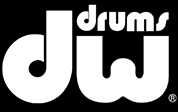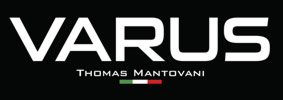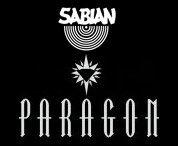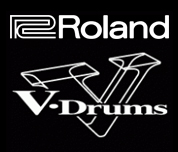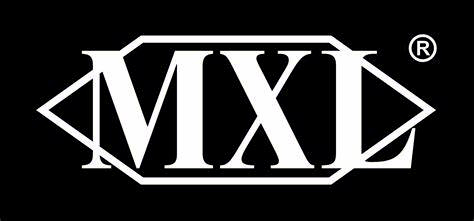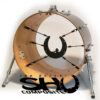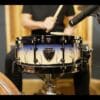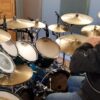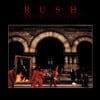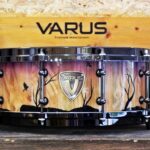 Cool…. starting my first online collaboration audition with some cool people on Kompoz. I hope to deliver some solid drum tracks that they will choose for the final mix. Even if they do not, it is a great exercise in the process and will help me improve future collaborations. While I am up early this morning listening to the track over and over I thought I would write a bit about how I approach adding drums to the recording from start to finish. This is not set in stone, just the way I operate.
Cool…. starting my first online collaboration audition with some cool people on Kompoz. I hope to deliver some solid drum tracks that they will choose for the final mix. Even if they do not, it is a great exercise in the process and will help me improve future collaborations. While I am up early this morning listening to the track over and over I thought I would write a bit about how I approach adding drums to the recording from start to finish. This is not set in stone, just the way I operate.
The Search
 First and foremost when starting a collaborative project I found it very important that I actually like a song from early in the first few listens and even more so that I have a song to work on. There are many great undiscovered songs out there and the internet is a blessing in that respect. As a drummer, I am personally drawn to specific styles of music in the Progressive Rock and Alternative genres. Mainly due to the style I grew up on in the 80’s and 90’s and gravitated to the most. Since I was a fan of those styles I would find that I would be drawn to learn the drum parts and replicate what the professional drummers have done with the music. The majority of my teaching is from listening and “reenacting” out parts on the kit. It actually has served me well over the years. Finding music to play in the past has been pretty much word-of-mouth or a serendipitous find on the internet. Enter sites like Kompoz. Kompoz gives users a great way to peruse music and find the perfect song in which to create parts. Essentially a dating site for musicians but more efficient ha… After finding a song to work on I will contact the artist and let them know that I plan to audition and see where it goes.
First and foremost when starting a collaborative project I found it very important that I actually like a song from early in the first few listens and even more so that I have a song to work on. There are many great undiscovered songs out there and the internet is a blessing in that respect. As a drummer, I am personally drawn to specific styles of music in the Progressive Rock and Alternative genres. Mainly due to the style I grew up on in the 80’s and 90’s and gravitated to the most. Since I was a fan of those styles I would find that I would be drawn to learn the drum parts and replicate what the professional drummers have done with the music. The majority of my teaching is from listening and “reenacting” out parts on the kit. It actually has served me well over the years. Finding music to play in the past has been pretty much word-of-mouth or a serendipitous find on the internet. Enter sites like Kompoz. Kompoz gives users a great way to peruse music and find the perfect song in which to create parts. Essentially a dating site for musicians but more efficient ha… After finding a song to work on I will contact the artist and let them know that I plan to audition and see where it goes.
The Learning
Once I have found a piece that I want to tackle, the fun (at least to me anyhow) ensues. I will get the track on a device that I can listen to at any time either the IPod, SmartPhone or my PC. At that point, no matter where I am during the day I can play the song in repetition to my hearts content to get a solid look at the foundation of the song. I will also try to contact the writer to see if they have any special requests or guidelines for the parts they are looking for. So far, I have been given creative license to write my own parts. That does not preclude me from styling my playing to match the overall musical tone of the song as not to impede it. Once I have listened to the song several times the first day then I sleep on it…. yes sleep on it.
I don’t throw the song on repeat, stick in the headphones and fall asleep (though I should try that someday, I hear that may work as well) I just go to sleep with remnants of the song ebbing and flowing in my head. The magic for me happens in the night when God’s magical creation of the brain does it’s work, working out issues and questions from the days before. When I awake the next day and get back to preparing to write the tracks, I have found that I have a better understanding of the song structure and where the parts change and where to “meddle” and where not to.
The Practice
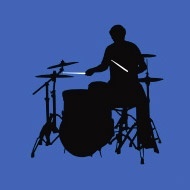 Now that I am at a point where I feel comfortable with the overall structure of the song it is time to wax the sticks up. Yes I do use Zildjian Drumstick Wax on my Pro-Mark sticks to reduce the amount of grip force that I apply to the stick when drumming. This extra grip helps me focus that muscle strength and energy on the actual playing and intricacies without fighting to keep the stick solidly in my hand. I am also trying a new product I found called Groove Juice Drum Stick Grip and will post about that at another time. But I digress….
Now that I am at a point where I feel comfortable with the overall structure of the song it is time to wax the sticks up. Yes I do use Zildjian Drumstick Wax on my Pro-Mark sticks to reduce the amount of grip force that I apply to the stick when drumming. This extra grip helps me focus that muscle strength and energy on the actual playing and intricacies without fighting to keep the stick solidly in my hand. I am also trying a new product I found called Groove Juice Drum Stick Grip and will post about that at another time. But I digress….
At this point I begin to play along to the song with a very basic and a fundamental approach with the Hi-Hat, Snare, Bass Drum, Ride Cymbal and maybe a Crash to get started. I work through the basic temp and rhythm following along with the song in its entirety a few times to commit the ideas I have in my mind to the muscles and get them to align to the music. I mainly focus on the rhythms for the areas of the song and not the fill or accent work. This gives me a comfort level with the song and opportunity to get familiar with all of the changes throughout the entire piece.
Fill work comes next. Once the general foundation of the song is set for my liking, I will start to work in accent and fills in places of the song where I feel the transition needs a boost (or reduction) or when the underlying rhythm is working with and not against the vocals. Something I do remember learning when I was younger from Neil Peart in one of his documentaries was … respect the vocals. After experimenting with many permutations of fills with transitions or critical parts of the music, I will isolate the ideas that I think give the best flow to the song and are additive and not subtractive.
I feel strongly to let your experience and body guide you into those accent and fill parts subconsciously and see where your hands take you. I have been able to come up with some cool stuff that way that may set my style apart from others.
The Assembly
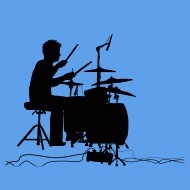 Ahhh….. so now I think I can pull off the recording effectively. Off we go…. With the foundation for the new drum parts in my head it is time to load the guide track into the DAW and get to work. At the time of recording I am usually able to pull up my REAPER project template and start the process fast with most all of the settings preset in REAPER. All of my mics have been dialed in for the best natural sound that I can get and just sometimes the toms will need a touch of tuning. I essentially record all of the mics dry to get the best natural sound. I do add a hair of compression with the Focusrite Octopre MKII Dynamic’s single dial hardware compression to the bass drums and snare as needed to give it a more professional sound sound without losing the ability to further mix later. After listening to each mic separately before each recording I verify that we are tracking and start recording. Depending on my preparation this can usually be done in one or two takes if all goes well.
Ahhh….. so now I think I can pull off the recording effectively. Off we go…. With the foundation for the new drum parts in my head it is time to load the guide track into the DAW and get to work. At the time of recording I am usually able to pull up my REAPER project template and start the process fast with most all of the settings preset in REAPER. All of my mics have been dialed in for the best natural sound that I can get and just sometimes the toms will need a touch of tuning. I essentially record all of the mics dry to get the best natural sound. I do add a hair of compression with the Focusrite Octopre MKII Dynamic’s single dial hardware compression to the bass drums and snare as needed to give it a more professional sound sound without losing the ability to further mix later. After listening to each mic separately before each recording I verify that we are tracking and start recording. Depending on my preparation this can usually be done in one or two takes if all goes well.
The Finishing
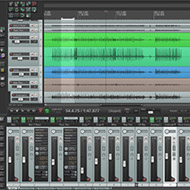 The final stage of mixing and delivery to the artist can take many forms. After I am completely comfortable with what I have recorded, I will first assess if they want the raw tracks to work with or a sub mix of everything to start to see if we mesh. Kompoz has a great system to audition for tracks and post only what is necessary to get the ball rolling for a mix. I record quite a few pieces of my drum set so I can provide a myriad of usable tracks that can be incorporated or tossed as needed. Hopefully not soon after we have a song complimented with my acoustic drum recording.
The final stage of mixing and delivery to the artist can take many forms. After I am completely comfortable with what I have recorded, I will first assess if they want the raw tracks to work with or a sub mix of everything to start to see if we mesh. Kompoz has a great system to audition for tracks and post only what is necessary to get the ball rolling for a mix. I record quite a few pieces of my drum set so I can provide a myriad of usable tracks that can be incorporated or tossed as needed. Hopefully not soon after we have a song complimented with my acoustic drum recording.
I look forward to this new adventure and will post future collaborative results or useable drum tracks soon I have done on Kompz.
More to follow..... Keep On Drumming!!!


